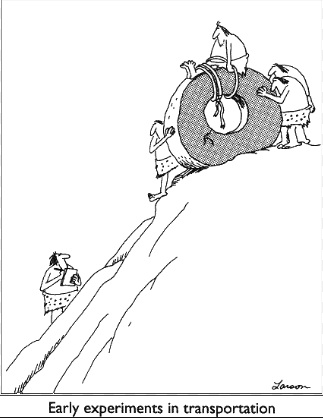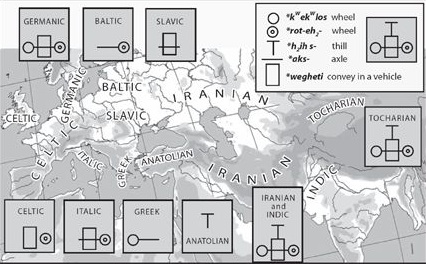Like the traditional poetry of other peoples, the traditional poetry of the Greeks celebrated the Heroic Age. This was the time when men were bigger and stronger, and they performed marvelous feats of prowess. Their weapons were made of bronze and not of iron, and they were ruled by kings. … The Heroic Age came to an end in two great wars – the Theban and the Trojan. … This was how the Mycenaean Greek civilization of the second millennium BC was remembered in historic Greece.
Margalit Finkelberg. Greeks and Pre-Greeks
Classical Greek poetry concerned with the Heroic Age includes a lot of genealogy, with an emphasis on descent in the male line, much like the begats in the Bible. Modern readers familiar with the Iliad and Odyssey find this stuff pretty boring, but it mattered a lot to the Greeks, who would try to link their existing patrilineal clans to the legendary family lines of the Heroic Age.
An emphasis on patrilineal descent is a general feature of early Indo-European society and its later offshoots, including the Greeks; the Indo-European expansion is one phase of the Patriarchal Age, leaving its imprint particularly on the distribution of Y chromosome variants. But given this patrilineal focus, there is something odd about the legends of the Heroic Age. In virtually none of the surviving legends do we find kingship passing from father to son, even when there is a son around. Instead, the normal pattern is that the king’s successor is the guy who marries his daughter – in other words his son-in-law, not his son. Meanwhile, the king’s son has to marry elsewhere. (Although the legends seem to present some cases of rotating succession, where multiple patrilineages took turns marrying into a matrilineage. In these cases, a king’s grandson might marry back into the kingdom, marrying his father’s sister’s daughter.) The implication is that the line of succession to the throne ran from mother to daughter, although it was the husbands of these women who actually exercised power: kingship by marriage. The most notable case of a son succeeding to his father’s throne is the exception that proves the rule: Oedipus got to be king of Thebes because he married Queen Jocasta, not because he was King Laius’ son. (Spoiler alert: see below*)
In Greeks and Pre-Greeks: Aegean Prehistory and Greek Heroic Tradition, Margalit Finkelberg argues that legends of the Heroic Age are memories of a time when the patrilineal traditions of the Greeks coexisted with earlier matrilineal traditions. More specifically, she argues that matrilineal Pre-Greek cultures were associated with the Anatolian language family, the first branch off the Indo-European tree, which also includes Hittite. On her account, Greece looks like ancestral Polynesia, a society flipped from matrilineal to patrilineal by invaders.
Finkelberg is not the first person to notice possible survivals of matrilineal descent from before the coming of the Indo-Europeans and other folk. Such survivals led some nineteenth century scholars to theorize that matrilineality – tracing descent and succession through the female line – was a stage of social evolution that all societies passed through. Some scholars also believed that matrilineal societies were matriarchal – ruled by women. Neither of these theories has held up very well. And yet …
… based on reconstructions of cultural phylogeny and/or ancestral vocabulary a number of the great demic expansions that covered the world seem to have started out matrilineal and/or matrilocal. The list (labeled by associated language families) includes:
- Austronesian (ancestral to languages ranging from Malagasy to Malay to Hawaiian)
- East Bantu, and maybe Bantu as a whole
- Nilo-Saharan (ancestral to Nilotic groups like the Nuer and Maasai, who, however had switched to patrilineality)
- Na Dene (North American Indians, including Athabaskan, Navajo, Apache)
- Je, Tupi, and Carib (Amazonian Indians)
So although matrilineal/matrilocal organization is not a stage that every society passes through, it seems to be a phase in many demic expansions. (I wrote an article, The matrilocal tribe: An organization of demic expansion, about this.) This is actually not too surprising. One solid finding in the anthropology of kinship is that matrilocal societies, in which a man goes to live with his wife’s kin when he marries, tend to be internally peaceful, without a lot of feuding between neighboring villages in the same tribe. This makes sense, since the men are no more related to the men in their own village than they are to men in neighboring villages. At the same time, matrilocal societies are often quite war-like with respect to folks outside the larger tribe (just ask the surviving neighbors of the Iroquois or the Navajo). Since matrilocality is associated with internal peace and external aggression, this social organization is well-suited to life along an ethnic frontier. Matrilocality (which is strongly associated with matrilineality) is one way tribal societies generate the social solidarity that enables demic expansion, in a pre-state variant of asabiya.
But there are several limits to matrilocal solidarity. First, the introduction of stock herding tends to undermine matrilocality and matrilineality. (My late colleague Henry Harpending worked with a group, the Herero in southern Africa, who had taken up cattle herding, and were probably in the early stages of transition from matri- to patrilineal.) Also matrilocal/matrilineal societies rarely exceed a few tens of thousands of people. Beyond that size their internal unity tends to break down, and parents start insisting that married sons stick around to defend the homestead. So a lot of the later, better known population expansions, including Indo-European, Semitic, Turkic, and Han Chinese are heavily patrilineal. But even today, traces of earlier matrilineal social organization still survive in some places – in the matrilineal belt of Central Africa, and in some of Southeast Asia, where patrilineality, and mate guarding to secure the male line, mostly don’t reach the same intensity as in much of Asia.
* Oedipus didn’t know it, but Jocasta was his mom.




